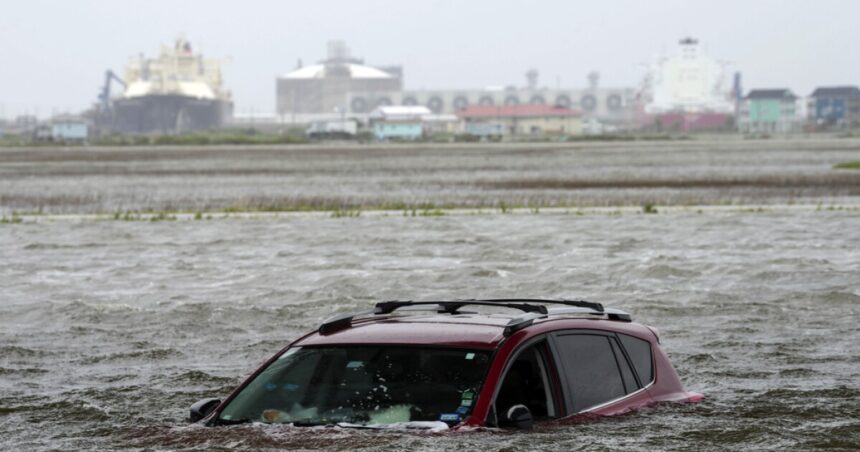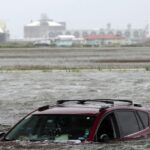Tropical Storm Alberto moved towards northeast Mexico early Thursday as the first named storm of the season. The storm brought heavy rains that resulted in three fatalities, but also offered hope to a region facing a severe drought.
Mexican authorities minimized the danger posed by Alberto and focused on its potential to alleviate the water shortage in the region.
“The wind speeds are not high enough to be considered a significant risk,” stated Tamaulipas state Secretary of Hydrological Resources Raúl Quiroga Álvarez during a press conference. He encouraged people to welcome Alberto with positivity, considering the long-standing drought in the area.
Many parts of Mexico have been experiencing extreme drought conditions, with northern Mexico being particularly affected. Quiroga mentioned the low levels of reservoirs in the state and Mexico’s substantial water debt to the United States in their utilization of the Rio Grande.
“This is a mutually beneficial event for Tamaulipas,” he added.
Unfortunately, Nuevo Leon state reported three deaths related to Alberto’s rainfall. One man died in the La Silla river in Monterrey, the state capital, and two children died from electric shocks in Allende. It was reported that the children were riding a bicycle in the rain.
Governor Samuel García of Nuevo Leon announced the suspension of metro and public transportation services in Monterrey until midday Thursday when Alberto is expected to pass.
Alberto was positioned about 40 miles east of Tampico, Mexico, and 250 miles south-southeast of Brownsville, Texas on Wednesday night, with maximum sustained winds of 50 mph. The storm was moving west at 13 mph.
Alberto was causing rains and flooding on the Texas coast as well.
The U.S. National Weather Service warned of potential flooding in southern coastal Texas due to excessive rainfall from Alberto. Tornadoes or waterspouts were also a possibility.
Residents in Mexico were hopeful for the rain Alberto would bring.
Blanca Coronel Moral, a resident of Tampico, awaited Alberto’s arrival by the city’s waterfront, expressing gratitude for the much-needed water. Schools in Tamaulipas were closed for the rest of the week as a precaution against localized flooding.
As much as 5-10 inches of rain was forecasted in certain areas along the Texas coast, with potential for higher isolated totals. Some regions in Mexico could receive up to 20 inches of rain, leading to mudslides and flash flooding, especially in Tamaulipas, Coahuila, and Nuevo Leon.
Alberto was causing rain showers on both sides of the border, extending across much of the south Texas coast and into Mexico’s Veracruz state.
Alberto was expected to weaken rapidly over land and dissipate by Thursday.
Related: As Texas braces for heavy rainfall, here’s how to prepare for extreme weather events





